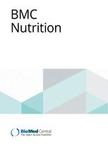版权所有:内蒙古大学图书馆 技术提供:维普资讯• 智图
内蒙古自治区呼和浩特市赛罕区大学西街235号 邮编: 010021

作者机构:UNSW Sydney Kirby Inst Sydney NSW Australia Kandahar Univ Fac Med Dept Publ Hlth Dist 10 Kandahar 3801 Afghanistan Univ Toronto Dept Hlth Policy Management & Evaluat Toronto ON Canada Kandahar Univ Fac Med Dept Para Clin Kandahar Afghanistan Master Sci Midwifery Reprod Hlth KABUL Afghanistan UHI Project JHPIEGO Kabul Afghanistan Kandahar Univ Fac Med Dept Internal Med Kandahar Afghanistan Univ Turku Res Ctr Child Psychiat Turku Finland
出 版 物:《BMC NUTRITION》 (BMC Nutr.)
年 卷 期:2025年第11卷第1期
页 面:1-10页
基 金:UNICEF
主 题:Afghanistan Child feeding practices Complementary feeding Minimum acceptable diet MAD
摘 要:BackgroundUndernutrition among children is a public health concern in most low and middle-income countries (LMICs) and is associated with poor child growth and development. Knowledge about child feeding practices is needed for nutritional policies and programs. Hence, this study assessed the status of minimum acceptable diet (MAD) and its associated factors among children aged 6-23 months in *** cross-sectional study was based on a secondary dataset of the 2022-2023 Afghanistan Multiple Indicator Cluster Survey (MICS 2022-23). Complete data from 7,876 children aged 6-23 months were analysed. The outcome variable was MAD and was defined according to the WHO and UNICEF recommendations and indicators for young child feeding practices. Bivariate and multivariate binary logistic regression analyses were used to identify factors associated with *** 7.3% of children aged 6-23 months were fed with the recommended MAD. The likelihood of receiving MAD was higher in children aged 13-18 months [adjusted odds ratio (AOR) 2.01 (95%CI: 1.63-2.48)] and 19-23 months [2.11 (95%CI: 1.68-2.66)], in children belonging to households with higher wealth status [1.39 (95%CI: 1.04-1.87), 2.06 (95%CI: 1.51-2.82), and 3.07 (95%CI: 2.14-4.40) for the 3rd, 4th, and 5th quintile of wealth status, respectively], and in children living in rural areas [1.56 (95%CI: 1.21-2.01)]. On the other hand, the maternal age group 30-39 years [0.79 (95%CI: 0.64-0.96)] and non-institutional delivery [0.67 (95%CI: 0.54-0.83)] were associated with reduced odds of *** study revealed that a small percentage (7.3%) of children received MAD in Afghanistan. This emphasizes the need for policies and interventions aimed at the improvement of child feeding practices to ultimately lead to better child nutrition and health in Afghanistan.